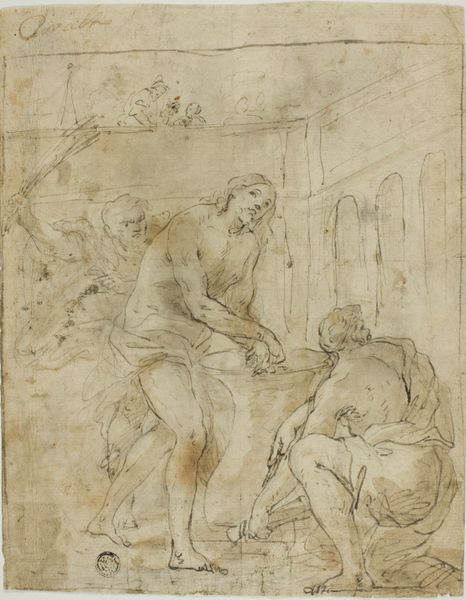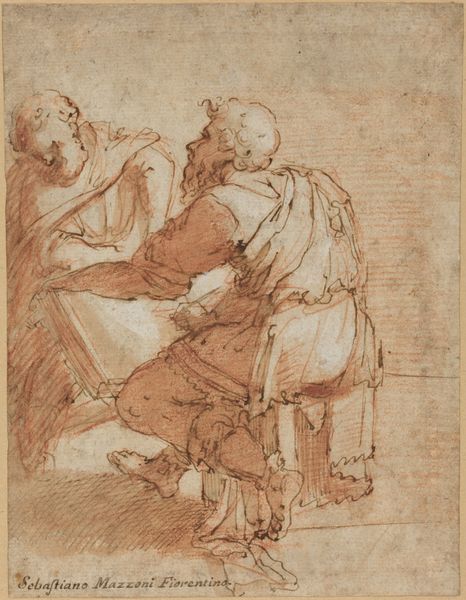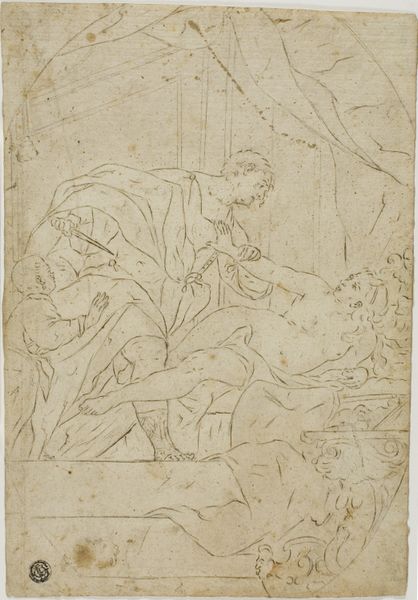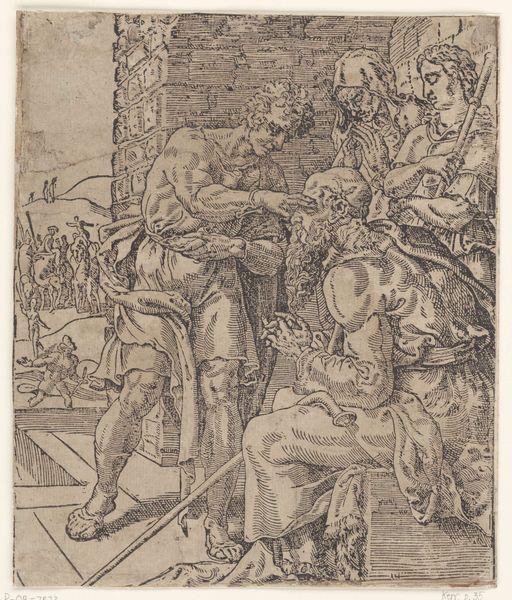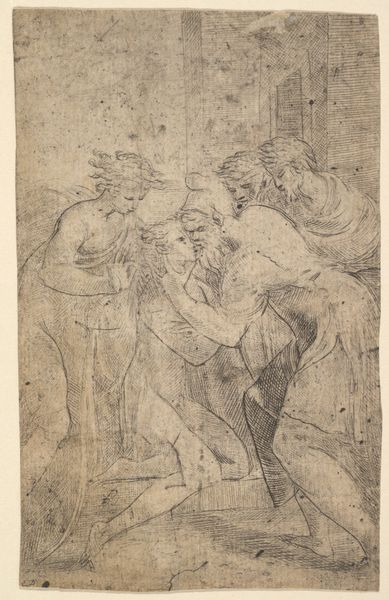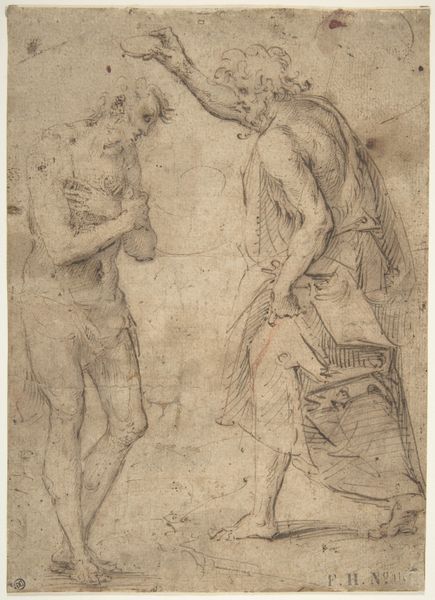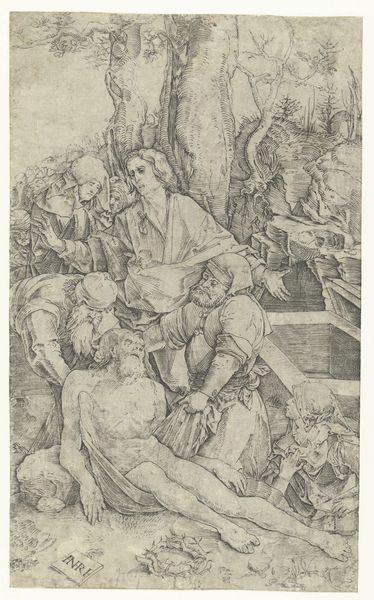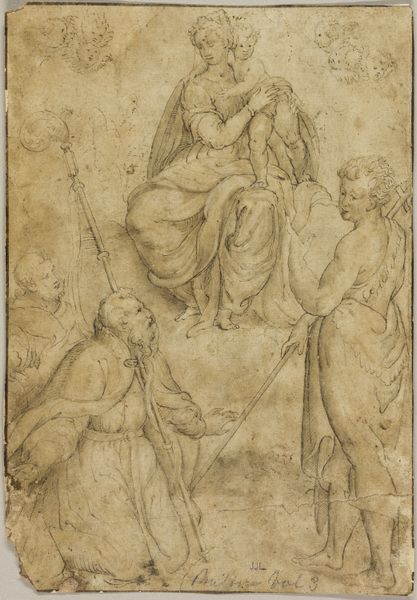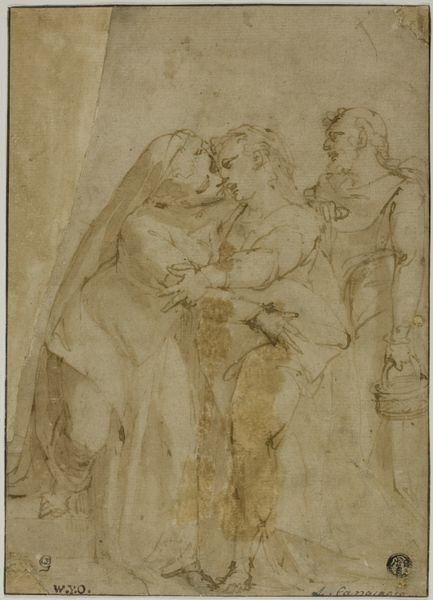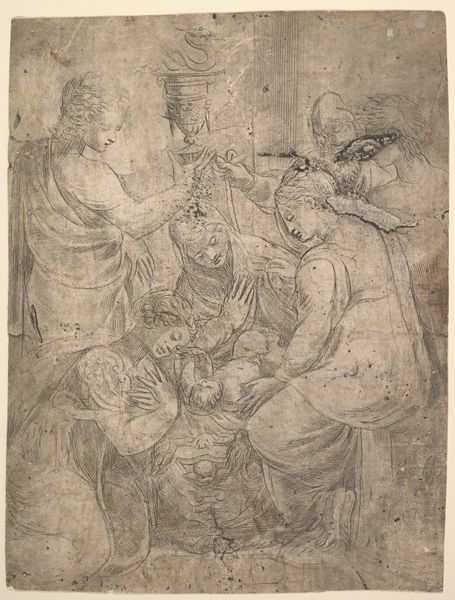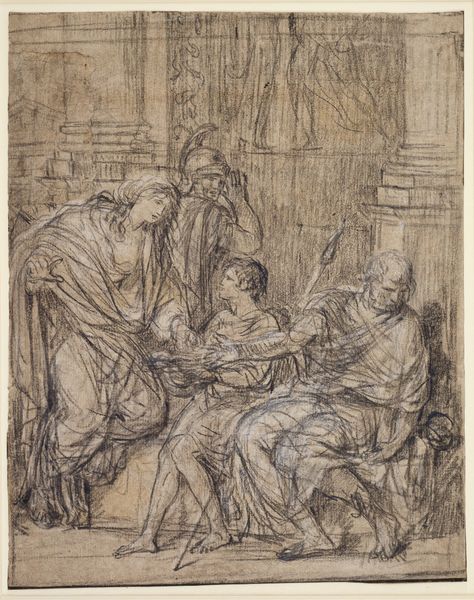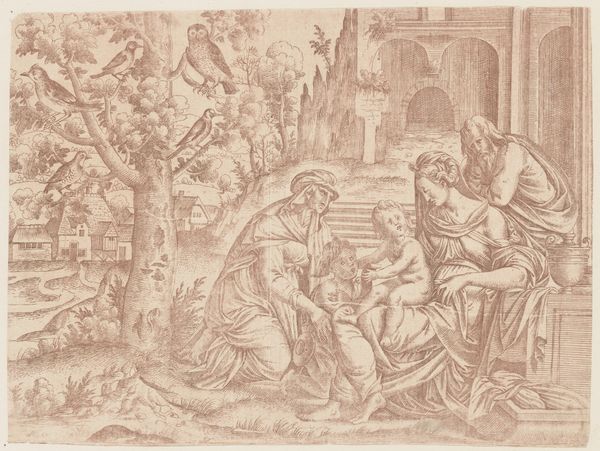
Zwei Türken, auf einem Thron nach links sitzend, hinter ihnen ein Wächter mit aufgestütztem Speer, alle Figuren in Dreiviertelrückenansicht
0:00
0:00
drawing, paper, ink, pencil
#
drawing
#
narrative-art
#
paper
#
11_renaissance
#
ink
#
pencil drawing
#
pencil
Copyright: Public Domain
Curator: At first glance, there's something melancholic about this scene. The limited palette of browns and grays casts a contemplative light on the figures. Editor: Today we’re looking at "Zwei Tuerken, auf einem Thron nach links sitzend, hinter ihnen ein Waechter mit aufgestuetzen Speer, alle Figuren in Dreiviertelrueckenansicht"—a pen and pencil drawing by Annibale Carracci, currently residing at the Städel Museum. The title, translating to “Two Turks Seated on a Throne Facing Left, Behind Them a Guard with a Resting Spear, All Figures in Three-Quarter Rear View”, offers quite a description. Curator: Yes, it's interesting how the composition itself seems to withhold information. We only see the backs of these figures, immediately placing us at a distance, even as observers. Considering the work was made during the Renaissance, how does that stylistic choice inform broader narratives around power, identity, and representation, especially in relation to depictions of Ottoman figures in Western art? Editor: The symbolism is striking. Notice the turbans—powerful signifiers of identity that were instantly recognizable at the time. But even the way they’re rendered feels important. They seem soft, almost deflated, not the hardened markers of authority one might expect. And the spear, grounded, suggests a pause, perhaps a moment of reflection rather than aggression. Does that resonate with you at all? Curator: It does, though I think it’s crucial to analyze how these symbolic shorthands may contribute to orientalist tropes or stereotypical portrayals. What power dynamics are at play in having these figures turned away, obscuring their faces and intentions? Editor: That's a good point. The averted gaze could indicate deference or, conversely, a deliberate act of resistance, a refusal to be fully seen and comprehended. This, in turn, gives more weight to the guard’s posture – watchful, yet weary. He appears bound to protect figures seemingly lost in thought or trapped by circumstances we can only imagine. Curator: So, is Carracci suggesting a quiet moment of vulnerability and complexity behind established ideas about Turkish people and the Ottoman empire? Or does the work only recycle familiar assumptions about exotic “others”, reducing their complexity to costumes and props within a larger theater of European identity? Editor: Perhaps it manages to be both at once, which would be fitting for this historical period. I'm drawn to the possibility that Carracci has tried to peek into an unknown reality using only the received symbols of his time. Curator: A crucial question of cultural negotiation at the time. Thank you for bringing that lens to our observation! Editor: Likewise! This drawing has definitely given me much to consider.
Comments
No comments
Be the first to comment and join the conversation on the ultimate creative platform.
